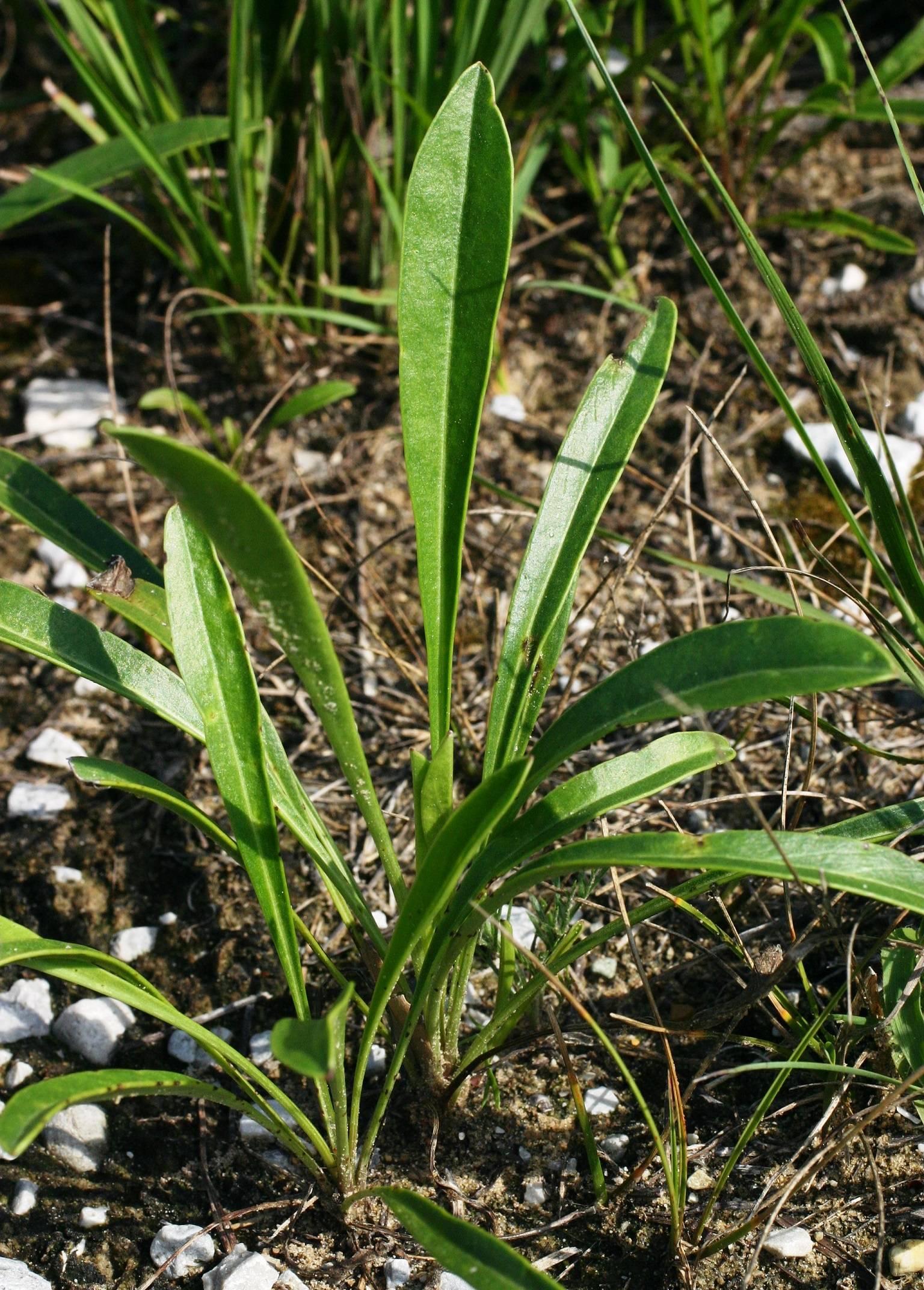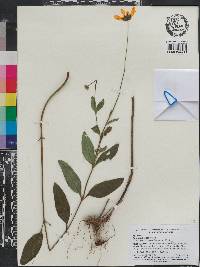|
|
|
|
Family: Asteraceae
lanceleaf tickseed
[Coreopsis crassifolia, moreCoreopsis heterogyna Fern., Coreopsis lanceolata var. villosa Michx.] |
Perennials, 10-30(-60+) cm. Aerial nodes proximal to first peduncle usually 1-3(-5+), distalmost 1-3 internodes 1-2(-8+) cm. Leaves: basal and cauline on proximal 1/4-1/3(-1/2) of plant heights; petioles 1-5(-8+) cm; blades simple or with 1-2+ lateral lobes, simple blades or terminal lobes lance-ovate or lanceolate to oblanceolate or lance-linear, 5-12 cm × 8-15(-18+) mm. Peduncles (8-)12-20(-35+) cm. Calyculi of lance-ovate to lance-linear or linear bractlets 4-8(-12) mm. Phyllaries deltate to lance-deltate, 8-12+ mm. Ray laminae yellow, 15-30+ mm. Disc corollas 6-7.5 mm, apices yellow. Cypselae (2.6-)3-4 mm, wings ± spreading, ± chartaceous, entire. 2n = 26 (+ 0-4B). Flowering (Mar-)May-Jul(-Aug). Sandy soils, ditches and roadsides, other disturbed sites; 30-500(-1000+) m; B.C., Ont.; Ala., Ark., Fla., Ga., Ill., Ind., Kans., Ky., La., Md., Mich., Miss., Mo., N.J., N.Mex., N.Y., N.C., Ohio, Okla., Pa., S.C., Tenn., Tex., Vt., Va., W.Va., Wis. Plants that have been called Coreopsis lanceolata var. villosa Michaux often have 5+ aerial internodes 6+ cm long proximal to the first peduncle; they may merit recognition as a distinct taxon or may be hybrids (or derivatives) from crosses between C. lanceolata and C. pubescens.
Clustered perennial 2-6 dm from a short caudex, glabrous or spreading-villous; stems leafy below, elongate and naked above; lvs spatulate to linear or lance-linear, simple or with 1 or 2 pairs of small lateral lobes, the lower long-petiolate, mostly 5-20 cm overall and 0.5-2 cm wide; the others reduced and sessile or nearly so; heads few or solitary on long, naked peduncles, the disk yellow, 1-2 cm wide; outer bracts 8-10, lanceolate to oblong-ovate, ±scarious-margined, 5-10 mm; inner bracts longer and broader; rays 1.5-3 cm; receptacular bracts flat and chaffy below, caudate-attenuate above; disk-fls 5-toothed; style appendages cuspidately acute; achenes 2-3(-4) mm, orbicular or broader, with thin, flat wings; pappus of 2 short, chaffy teeth; 2n=24, 26, 48. Dry, often sandy places; Mich. and the n. shore of Lake Superior to Fla. and N.M.; cult. and often escaped. Apr.-June. (C. crassifolia; C. heterogyna) Gleason, Henry A. & Cronquist, Arthur J. 1991. Manual of vascular plants of northeastern United States and adjacent Canada. lxxv + 910 pp. ©The New York Botanical Garden. All rights reserved. Used by permission. |



